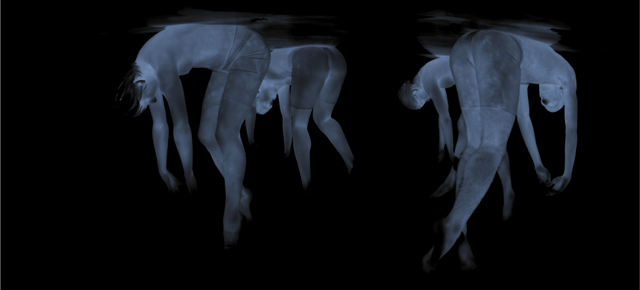Posthuman Dance: Body Heat and Haptic Intimacy in ORA
Filmed with 3D thermal imaging technology, ORA, a 2011 National Film Board collaboration between Montréal choreographer José Navas and filmmaker Philippe Baylaucq, renders the dancers’ body heat visible. The infrared cameras used for the film, developed by American defense and security company Lockheed Martin, are usually limited to military, scientific and medical applications, and detect every subtle variation in body temperature. As a result, the dancers in ORA are not only representational but also material. Their moving bodies are revealed to be more than singular units; inhabited by many visible currents (blood, heartbeats, breath), they help us visualize the ‘assemblage of forces, or flows, intensities and passions that solidify in space and consolidate in time, within the singular configuration commonly known as an “individual” self’ (Braidotti, 2006: 201). Following Laura U. Marks’ work on ‘haptic visuality’ and embodiment in film, I suggest that Baylaucq’s pairing of non-utilitarian use of military heat-sensing cameras complicates the way we think about the ‘objective’ gaze and the posthuman body. In presenting bodies that are not only images but also heat-traces of living corporeality, ORA creates a tactile aesthetic experience that is textured and indexical rather than purely symbolic or merely visual, thus moving away from paradigms of occularcentric mastery and towards the production of haptic familiarity. The combination of military surveillance technology with dance in ORA presents a unique assemblage in which a machine of control in fact works to engender closeness rather than alienation or fear. This intimacy opens onto a new aesthetics of the posthuman body that swaps technophilic materiality for a sensual presence that invites touch and interaction.
